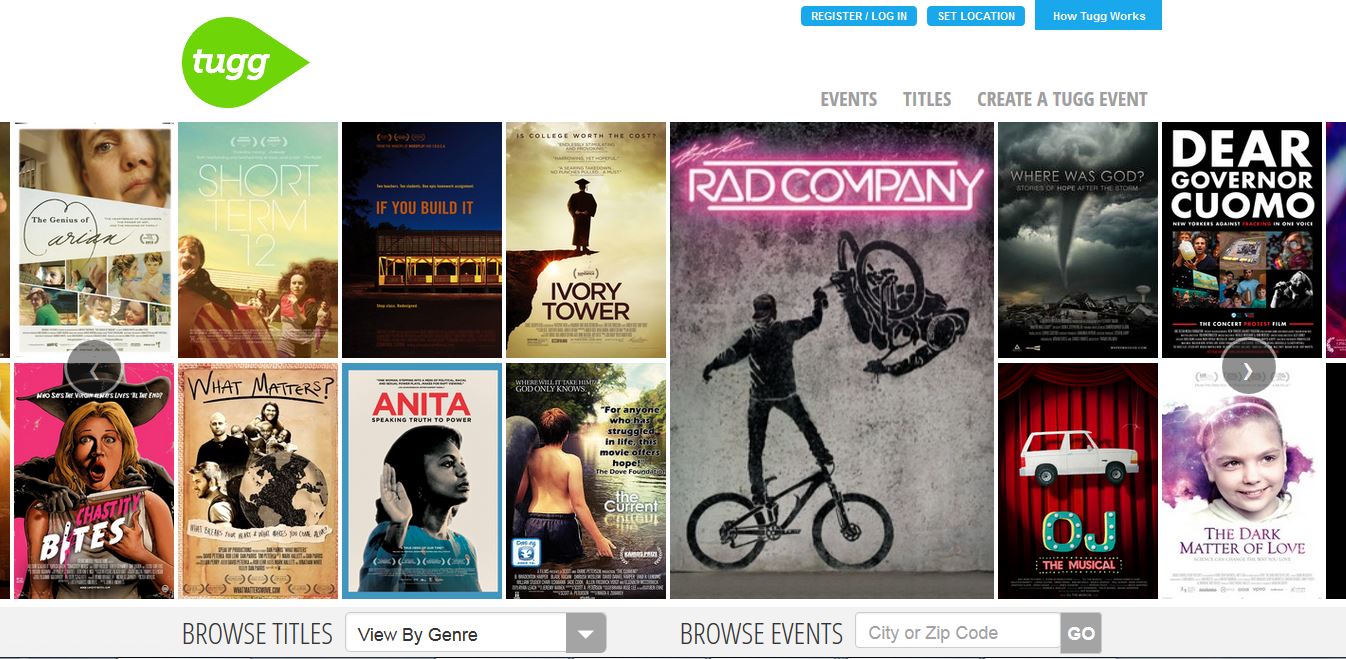Soundtrap is a collaborative, cross-platform digital tool that provides a simple and quick way to record and edit podcasts or act as a music composition aid. Whether for solo or group use, Soundtrap provides a free audio interface that works via desktop or mobile, ultimately delivering a platform that accommodates the user. Users are able to instantly upload their creations to Spotify with the click of a button, allowing them to share their work with millions of people.
ArtBinder Viewer: Galleries, Artists and Collectors in the Digital Age
Avant-garde art, pioneering artists, eye-opening exhibitions: you might think you can only see such things at a museum or a gallery. Guess what? You can now have the same experience at home, with ArtBinder Viewer. ArtBinder Viewer is a digital platform where you can browse artwork from some of the most reputable art galleries and artists around the globe.
Saatchi Art: Rethinking the Relationship Between Artists and Collectors
Saatchi Art is a virtual gallery for both artists and collectors. It hosts a collection of paintings, sculptures, and photographs in a variety of price ranges by artists from all over the world, providing a way for artists to exhibit and sell their work on a mobile platform. Check out the details of this app here.
Saatchi Art: Rethinking the Relationship Between Artists and Collectors
Saatchi Art is a virtual gallery for both artists and collectors. It hosts a collection of paintings, sculptures, and photographs in a variety of price ranges by artists from all over the world, providing a way for artists to exhibit and sell their work on a mobile platform.
NO AD: Street art in the subway
A recent Endgadget article highlights an artistic solution to getting the advertisements out of your way - an app called “NO AD” which digitally replaces advertisements with street art. Intrigued by the concept, and already planning to visit the Big Apple, I seized this opportunity to try it out and share my hands-on impressions.
Tugg: An Easy Way to Host a Movie Screening of Independent and Emerging Filmmakers
In the U.S, rights to present movies from major film studios can be obtained through Swank Motion Pictures and Criterion USA, the two largest film licensing companies in the nation. A third option that caters to independent films and grass roots organizations was launched at SXSW in 2012. Tugg functions mostly as an intermediary between independent filmmakers and their audiences, making it easy for movies to be shown in theaters and alternative venues. Its format makes it valuable for organizations that do not have an appropriate venues or filmmakers looking to increase their exposure.
Art Collecting Gone Social with ARTtwo50
As I’m sure you’ve noticed, the advent of digital technologies have radically changed our world. Lately it seems like the process of art collecting finally caught up - Amazon sells original art and services like Gertrude and Art.sy digitize traditional collecting. Perhaps the most innovative and clever of these services is ARTtwo50 - I played with their app over the weekend.
How Google Art Project Benefits the Public
How many of you have ever imagined being able to see artwork in the greatest museums around the world without leaving your chair? Driven by his passion for art, Amit Sood developed Art Project to let people do just that. The Google Art Project includes various museums from nine different countries, which provides people an access to artworks worldwide. It’s not uncommon, many people and organizations began to think about “online museums” years ago. However, I found two important features, which I rarely notice on other similar websites, that differentiate Google Art Project from others-----the extremely high pixels (10 billion) and the collection button.
image 1
(Image 1)
Some people wondering what could we get from 10 billion pixels? Google Art Project’s pursuit for an extremely high pixel count for each piece ensures audiences have a high level of exploration experience for artworks. For instance, the Harvesters, painted by Pieter Bruegel the Elder in 1565, gives you a general view on the artwork at the first glance (Image 1). Gradually, you will probably be curious about several detailed part of the paintings. What are people doing in the triangle 1 and triangle 2 areas (Image 1)? As you zoom in triangle 1 area, you will clearly see expressions on each person’s face (Image 2). Then you will really want to look deeply. As you start playing around, you will find something going on over there in triangle 2 area. As you zoom into the triangle 2 area, you will find that the artist depicted a scene of kids beating something (Image 3). Apparently, it seems to be a quite popular game. After I did a little research on Google, I found this was a game called score which involves in beating the goose with sticks. You see, I learned something from the exploration process for the painting.
image 2
(Image 2)
(Image 3)
This high standard of pixels also enables people to observe the details about brush strokes and to see how an artist actually creates the masterpiece. As I deeply go to the favorite part of the painting Starry Night painted by Van Gogh. Interestingly, as I zoomed in, the cracks noticed seemly closer the distance between Van Gogh and me. I've never gone into the Starry Night like this before.
Another amazing feature of this project is the collection button. This button enables any one of us to create our own museums online by creating our own collections out of all these images. Moreover, you can introduce your museum to your friends via sending an email and really get a conversation about what your feeling is when going to these masterpieces.
Additionally, we also see some potential values of this project for the arts education field. This could be a great tool for arts teachers to better get to the interpretations of interesting details of the masterpiece in class. For now, the Google Art Project seemingly performs well at a technical level. However, from a management perspective, some people doubt its problematic execution. Another concern is if the implication of Google Art Project is that in the future there will no longer be any need to visit a museum. This is not our focus of this post, but we are curious about your opinion about this project. Leave a comment below!
Application Review: 2wice Merce Cunningham Event
Merce Cunningham was always the innovator. The application for mobile devices, 2wice Merce Cunningham Event emerged from a series of performances between 2001 and 2007 for the visual and performing arts journal twice. The resulting application was meant to represent the imagery and experience of dance in a new medium.
Applications for Inspiration: IBM THINK and Moodstream
Today is a day for inspired thought and dreamy retrospection as we take a look at two neat applications; IBM THINK and Getty Images’ Moodstream. The first marvels in the progress of mankind while the second uses a combination of archived photographs, videos, and music to create a mood!

















